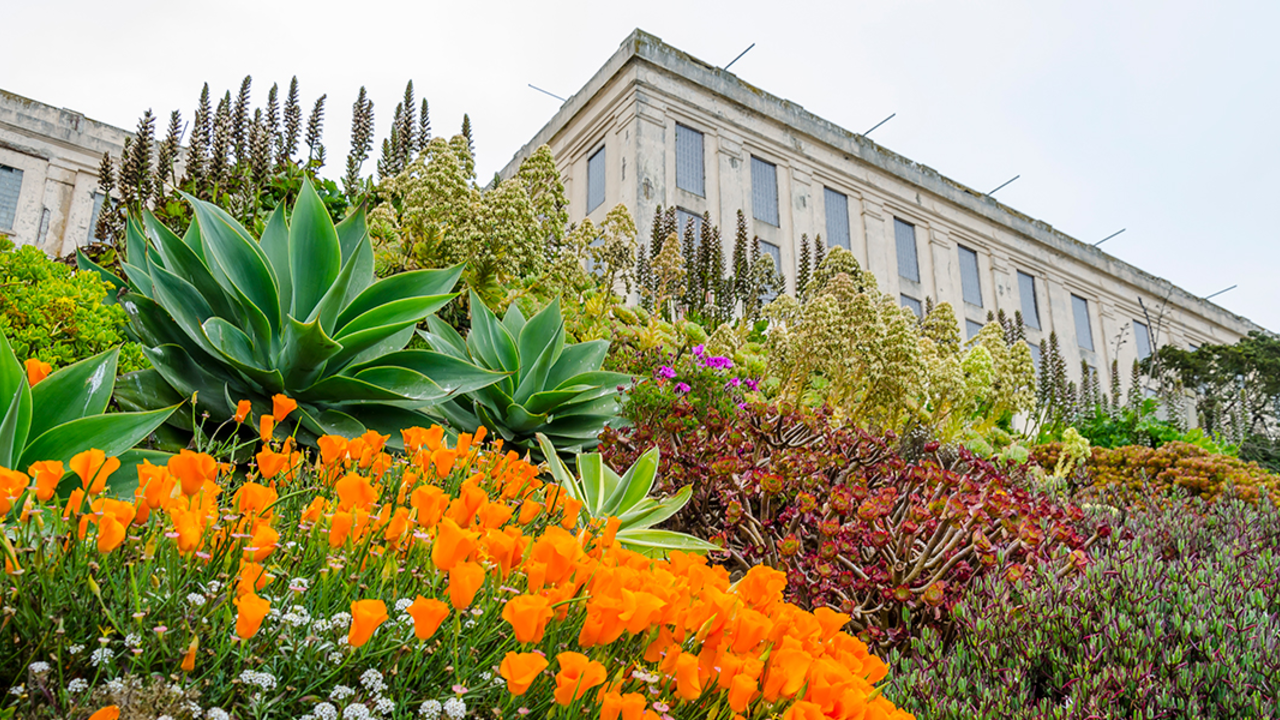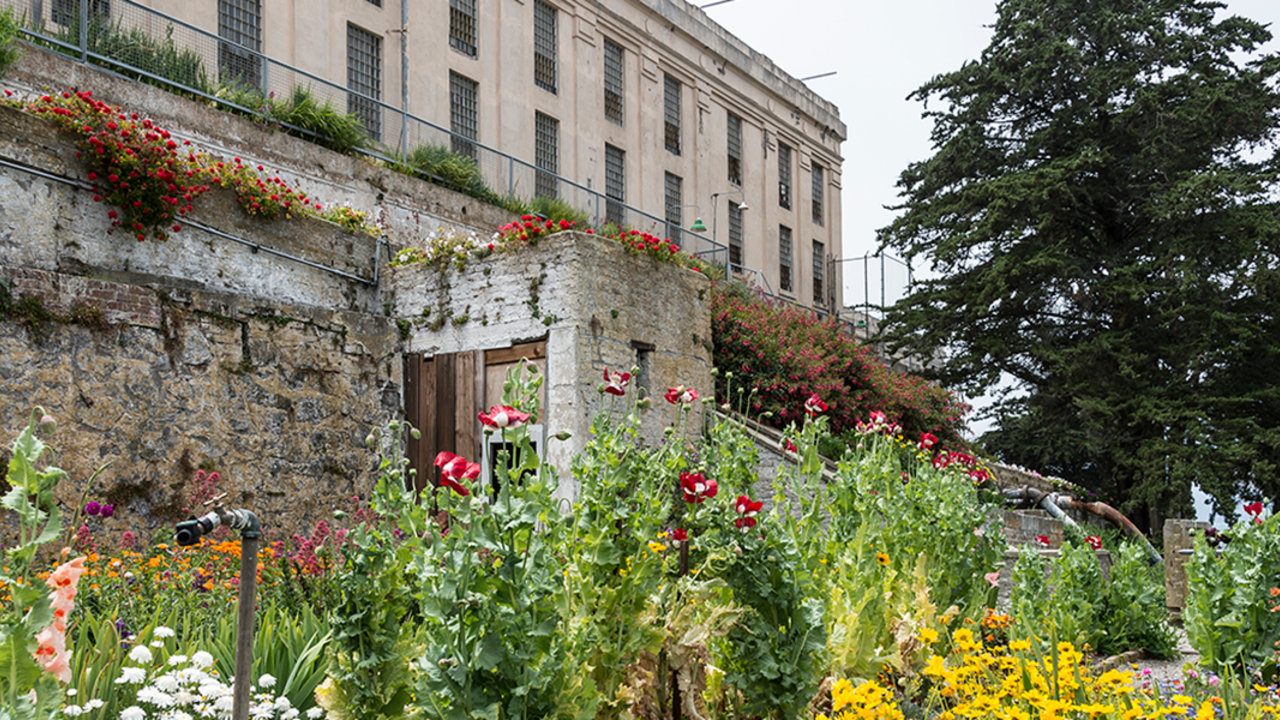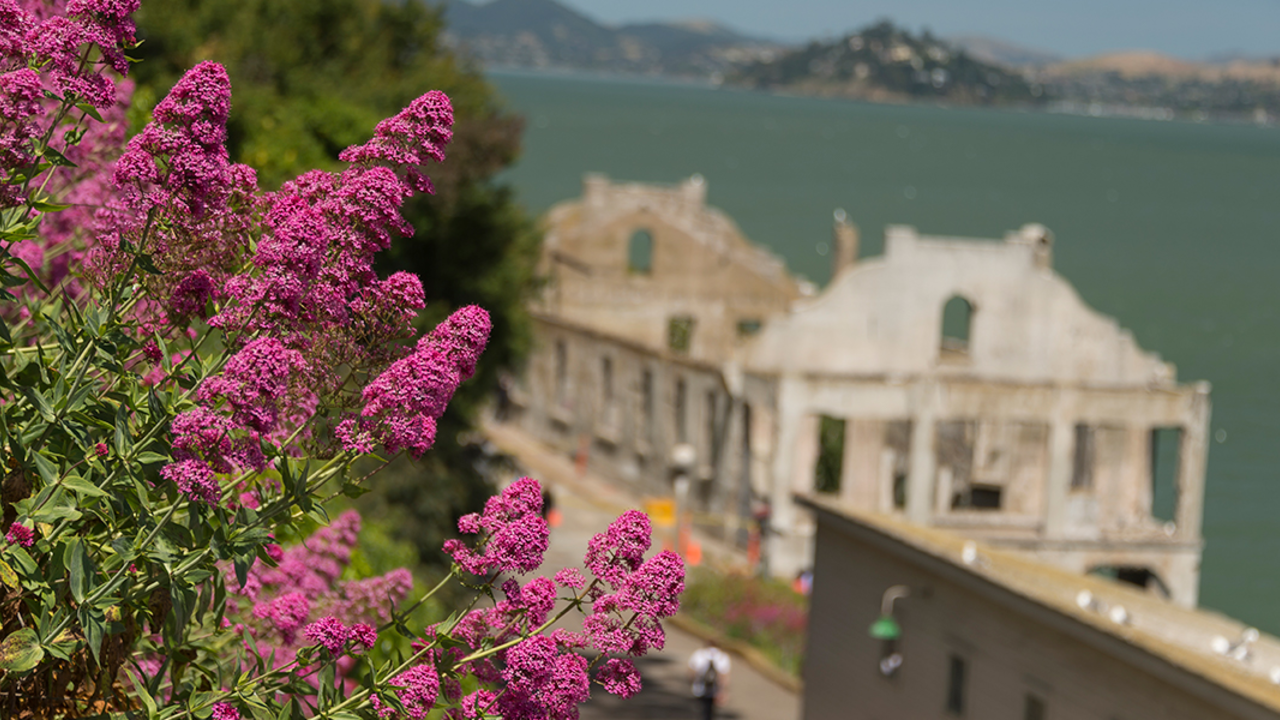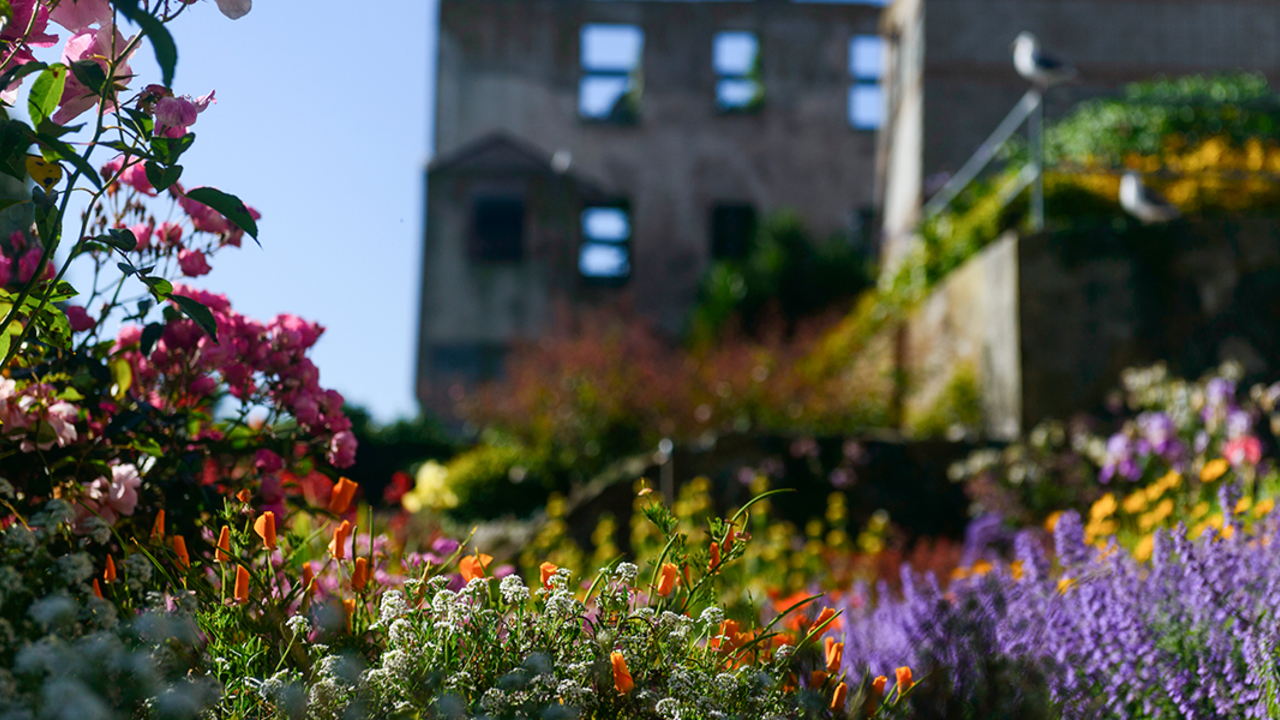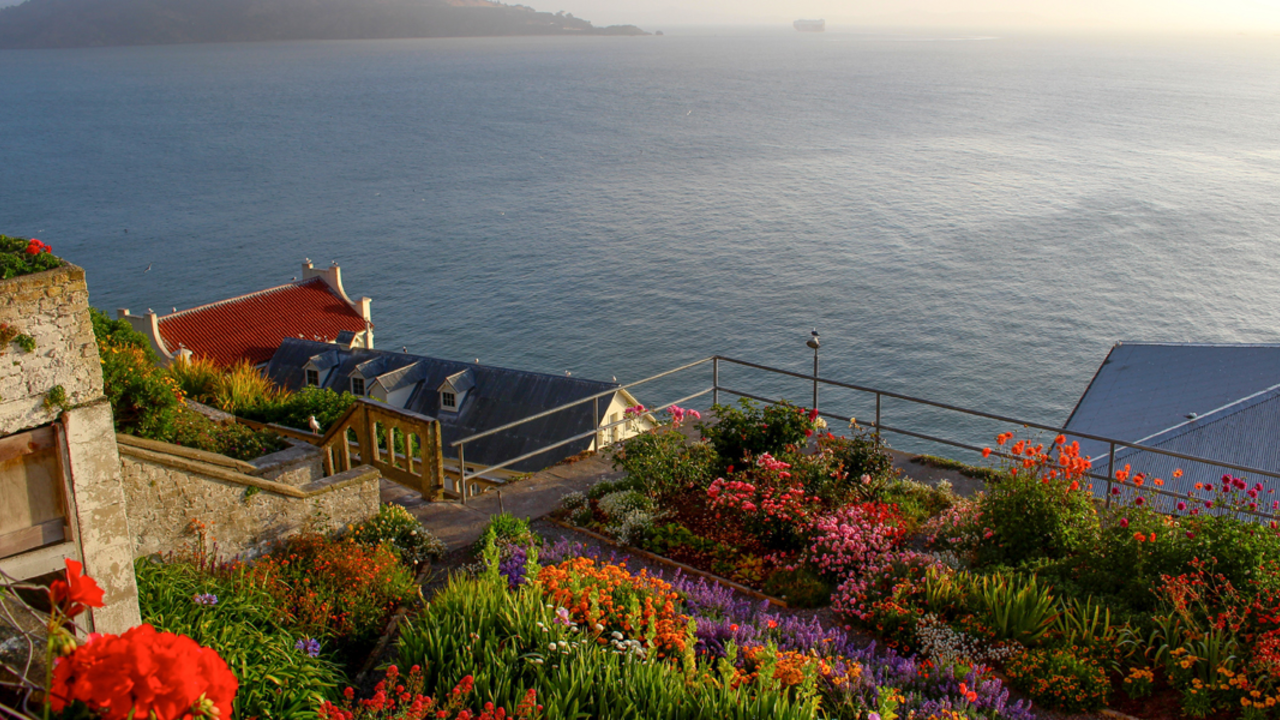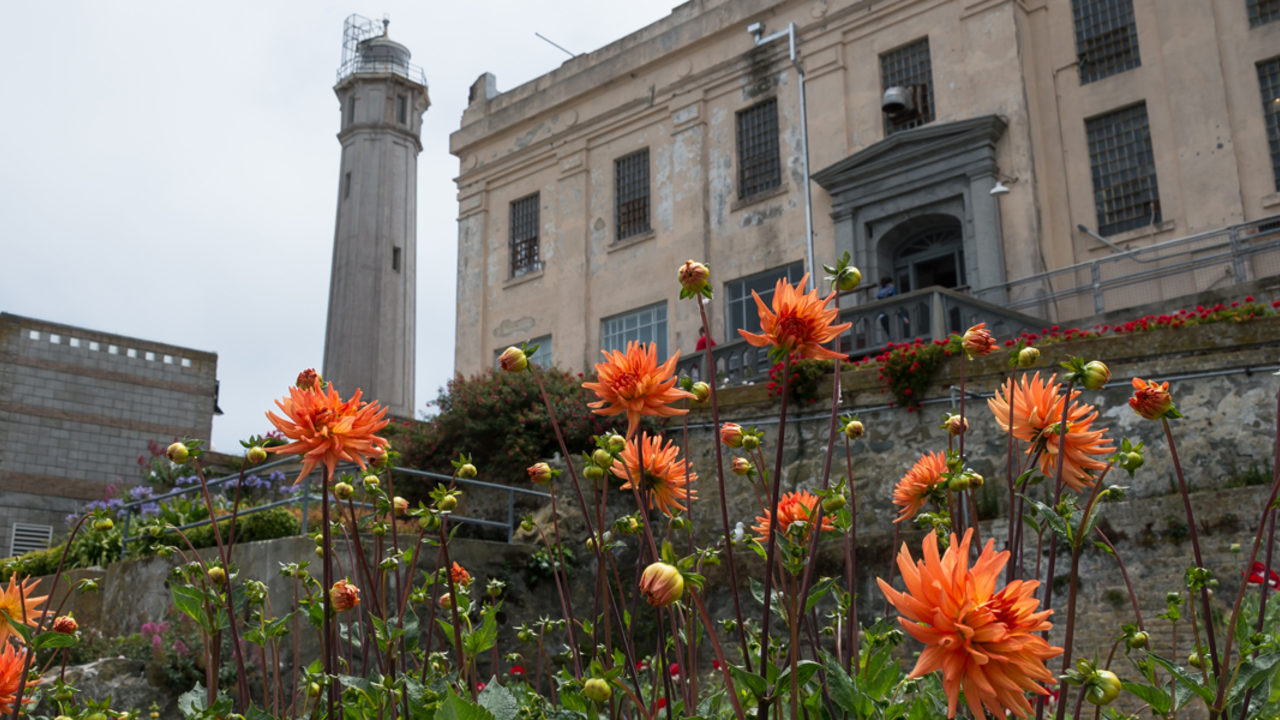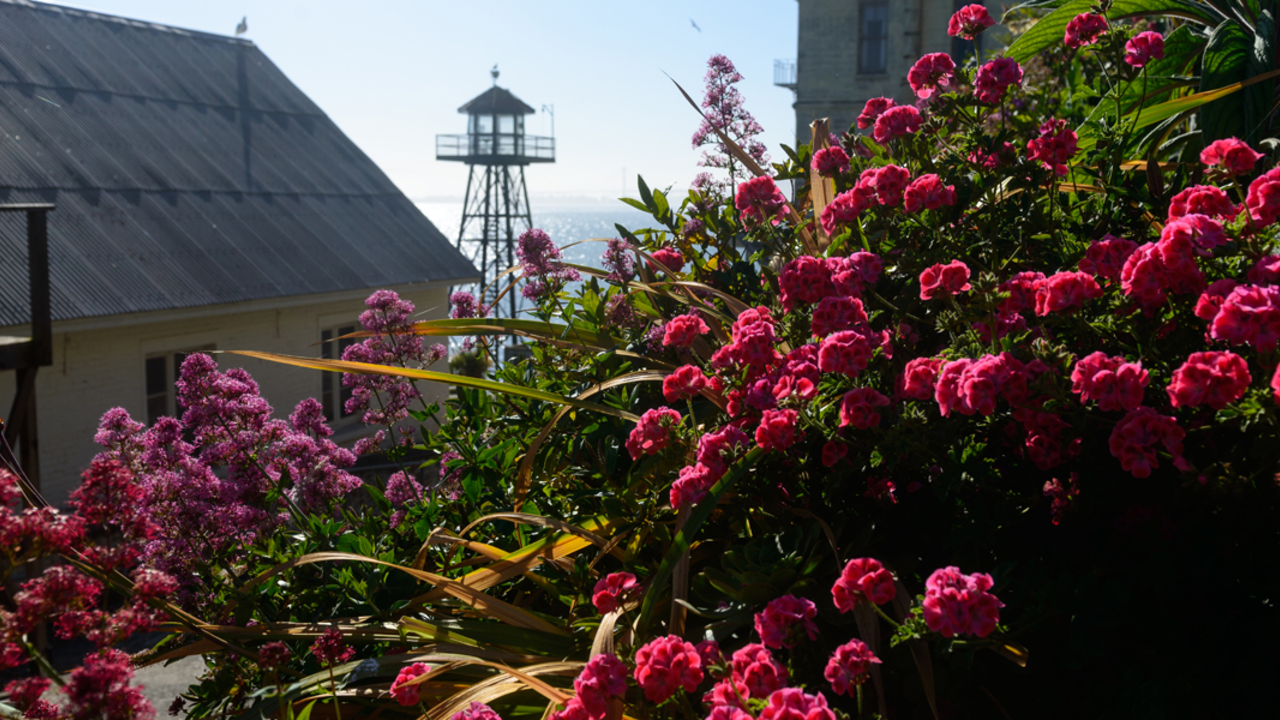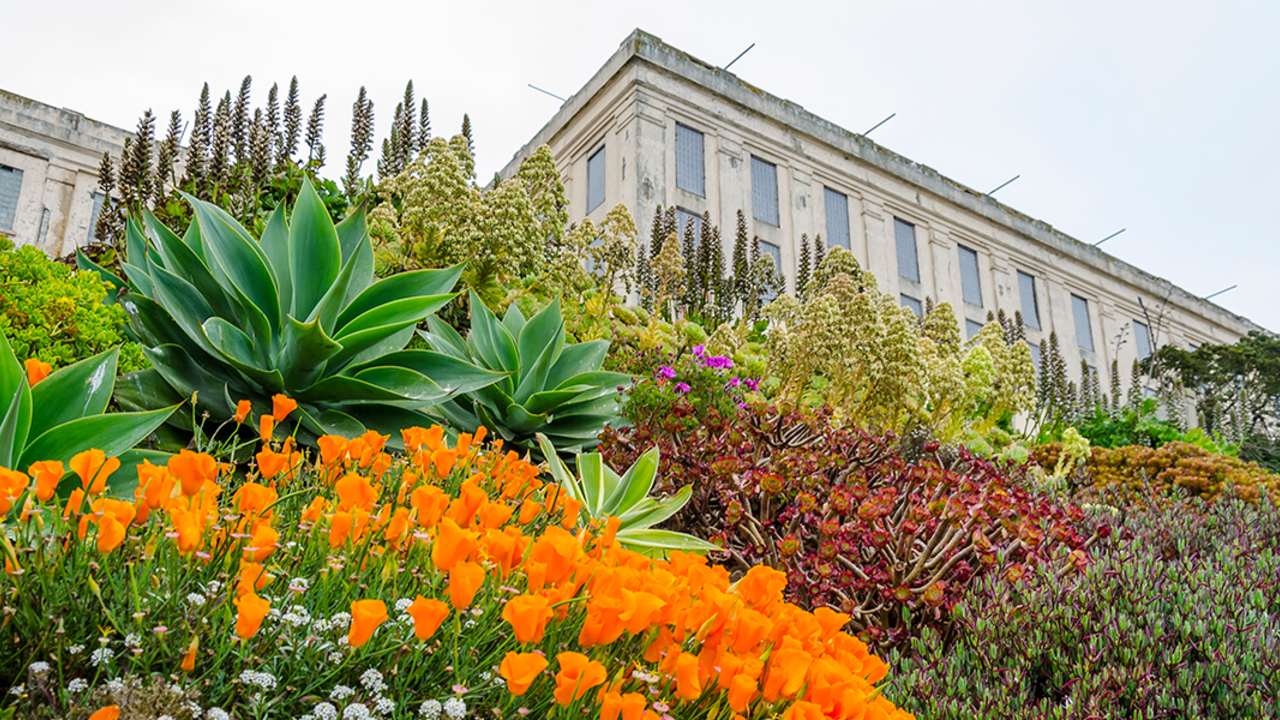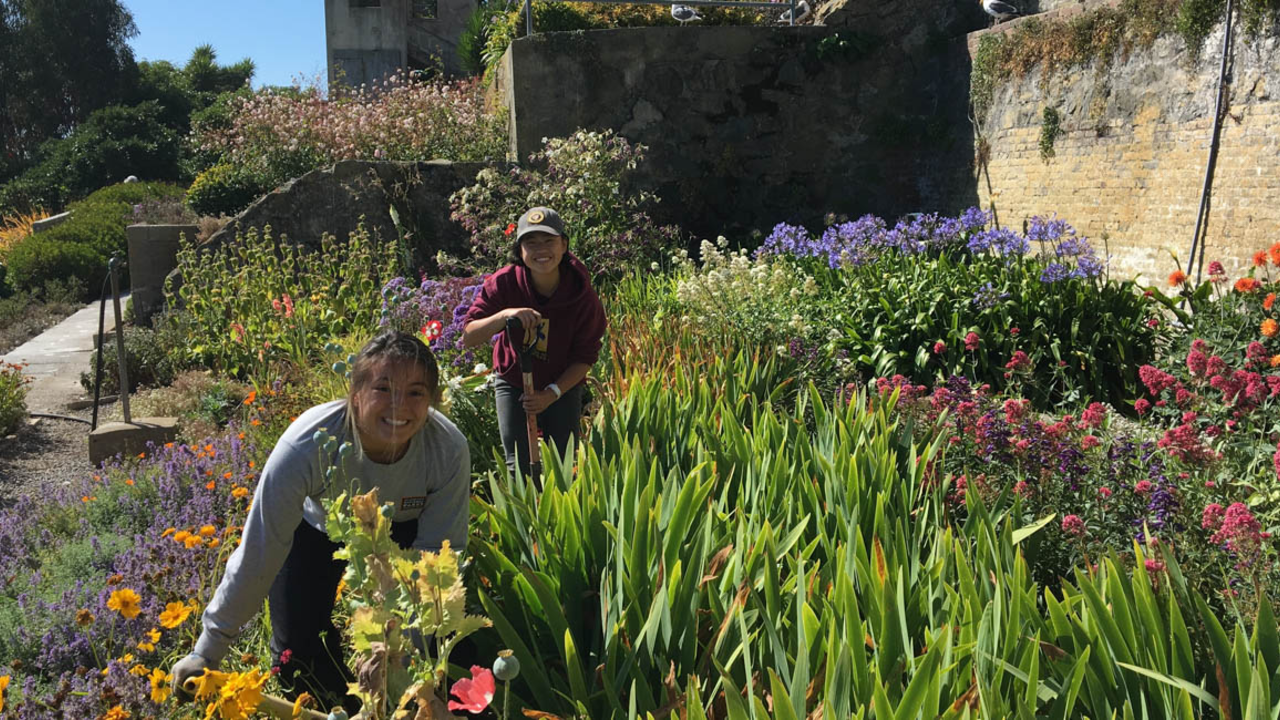Alcatraz Historic Gardens Landscape Preservation Planning
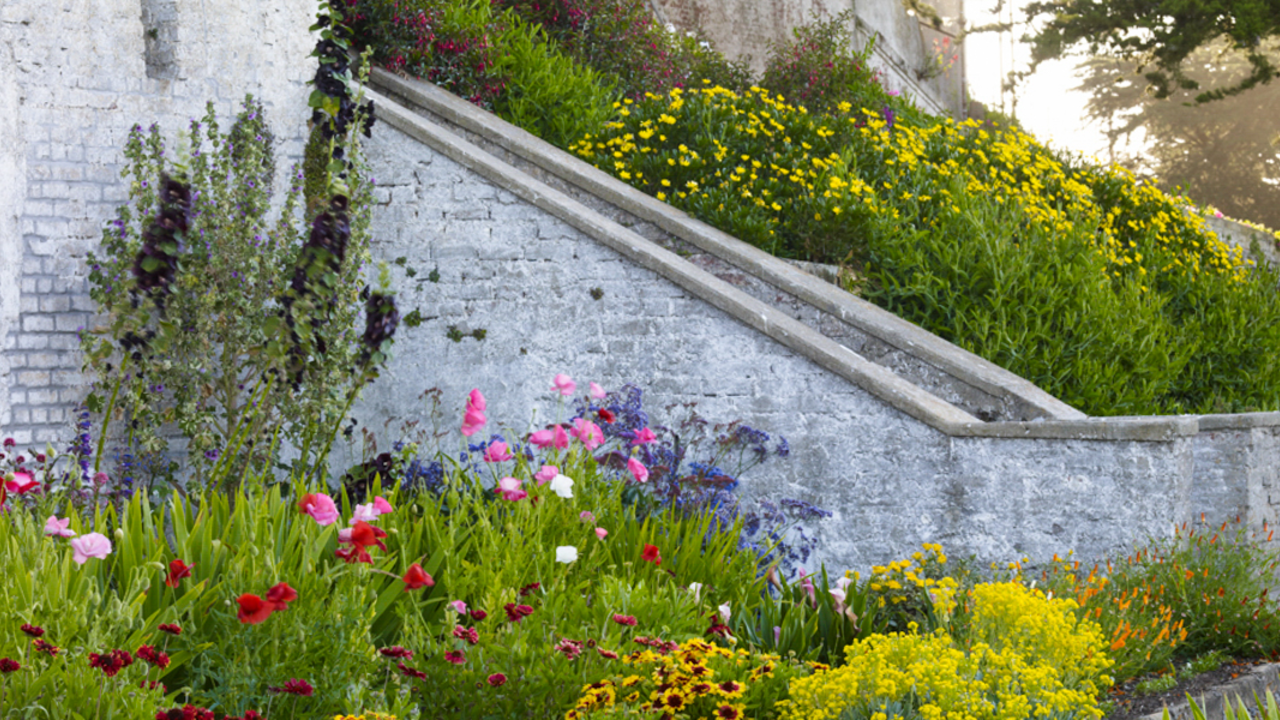
Marion Brenner
Imagine finding a photograph of your grandmother’s long-overgrown garden and deciding to replant it to look as it did when she gardened. To begin, however, you must find all of your extended family members to seek their input and approval. Alcatraz Historic Gardens have a similar story: the project team found historic photos of the gardens, but before digging into the gardens to bring them back to life, it needed input and approval from the National Park Service (NPS) “family members” — historic landscape architects, archeologists, and historians.
On “the Rock,” little grew uninvited or untended. Only human tenacity enabled plants to flourish.”
Delphine Hirasuna, Gardens of Alcatraz
The NPS began studying the Alcatraz landscape more than two decades ago. In 1991 and 1992, it formally acknowledged the historic gardens when it prepared a draft cultural landscape report and historic grounds report. Using these documents, the NPS produced a development concept plan in 1993 that proposed different methods of managing the historic landscape: preservation, rehabilitation, and restoration.
A few years later, in 1995, the Golden Gate National Parks Conservancy began working on a book called Gardens of Alcatraz, published the next year. One of the authors, Russ Beatty, began combing through NPS archives for letters and photos that would provide insight into the people who created and tended the gardens. Beatty contacted a formerly incarcerated gardener and obtained a firsthand account of Alcatraz gardening from his perspective. Beatty also discovered photographs of the gardens from the penitentiary era. Beatty’s research laid the groundwork for the Olmsted Center for Landscape Preservation, which prepared Landscape Stabilization and Maintenance Guidelines for Alcatraz in 1998. These guidelines recommended that the gardens receive immediate attention to prevent further deterioration of their landscape features.
The Historic Gardens of Alcatraz Project began in 2003 as a partnership project of the Garden Conservancy, Golden Gate National Parks Conservancy, and NPS. Each partner brings vital skills to the project. The NPS is the official owner and caretaker of Alcatraz, a National Historic Landmark, and is responsible for preserving its cultural resources. It sets the standards for any proposed changes to the historic landscape. Firmly established as an official park partner, the Golden Gate National Parks Conservancy oversees improvements throughout the Golden Gate National Parks and helps recruit community members to volunteer in the gardens. From 2003 to 2014, the Garden Conservancy, who specializes in garden preservation, led the gardening effort, and oversaw the volunteer gardeners. Now, the historic gardens are managed by the Golden Gate National Parks Conservancy.
To start, the team gathered historic photos and letters from the National Park Service Archives located in the Presidio and San Bruno, and also compiled oral history interviews and photographs from former Alcatraz residents. Family photos of former island staff often had family members posing in front of blooming gardens. A handful of these photos even showed incarcerated penitentiary men working in the gardens. Again, Beatty’s initial research provided helpful documentation.
In 2005, the Garden Conservancy and the Parks Conservancy funded preparation of the Alcatraz Island Cultural Landscape Inventory (CLI), which outlined the island’s history as it related to the gardens. Ideally, a cultural landscape report (CLR) is used as a guiding document for changes at a historic site, however, due to the urgency of saving the gardens and the long timeframe for completing a CLR, the NPS authorized the preparation of a CLI. The CLI concluded that the landscape must be preserved and maintained. More detailed than the Olmsted report, this important document helped the project team decide which areas best told the story of the gardens. It also established an overall treatment philosophy and approach for the gardens.
Before planting could begin, the NPS required that a detailed treatment plan be prepared and approved for each garden area. The treatment plans described the history and existing conditions (including documentation of any surviving plants) and included planting and structural repair plans, maintenance considerations, timelines of proposed work, and interpretive plans. All of the gardens were designed to give the look and feel of the original gardens; the approach—rehabilitation—focused on repairing, altering, and making additions to the gardens, while preserving features that conveyed the historical, cultural, or architectural values. View a sample treatment plan here.
Rehabilitation of the five garden areas occurred over four years. The team began with the landscape along the Main Road (2005 to 2006), as this is the first garden area to greet visitors on their walk up to the cellhouse; the rehabilitation effort then moved to Officers’ Row (2006 to 2007), the Rose Terrace and Cellhouse Slope (2007 to 2008), and finally the Prisoner Gardens on the west side (2008 to 2009). As every gardener knows, a garden is never complete: the team continues to make small changes to the gardens. Some of these changes require formal amendments to the treatment plans while other changes are minimal and do not need NPS review.
The NPS completed the comprehensive Alcatraz Island Cultural Landscape Report in December 2010, which incorporated all of the recommendations in the treatment plans. The document also identified many unrestored historic garden areas and made recommendations for their rehabilitation and cultural interpretation.
Today, visitors strolling through the blooming gardens reap the rewards from the many years of planning and rebuilding. The restored gardens are a shining example of successful partnerships.
